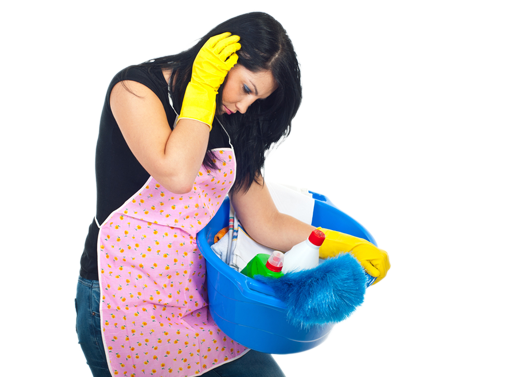Ultimate Methods for Removing Mould from Sills
Posted on 18/09/2025
Ultimate Methods for Removing Mould from Sills
Do you suspect mould clinging to your window sills? Black or green patches on your sills not only look unsightly but can cause a variety of health issues and even structural damage if left untreated. This comprehensive guide dives deep into the ultimate methods for removing mould from sills, ensuring your home stays clean, healthy, and mould-free.
Why Is Mould on Sills Such a Problem?
- Health Risks: Exposure to mould spores can cause allergic reactions, respiratory issues, and aggravate existing health problems, particularly in children and the elderly.
- Material Damage: Mould can eat into paint, wood, and plaster, weakening sills over time.
- Unpleasant Odors: Mould grows with a characteristic musty smell that permeates living spaces.
- Aesthetics and Property Value: Visible mould significantly reduces the appeal of your home.
Ignoring mould now can lead to more severe and expensive issues down the line!

What Causes Mould Growth on Sills?
Mould thrives on moisture and organic material. Window and door sills are particularly vulnerable due to condensation, poor insulation, and infiltration of rainwater. The factors increasing the likelihood of mould on window sills include:
- Poor ventilation in the room
- Condensation from temperature differences
- Leaky windows or inadequate sealing
- High humidity levels
- Lack of regular cleaning
Identifying Mould on Sills
Not all stains or discolorations are mould, but look for these common signs:
- Color: Black, green, brown, or even white fuzzy patches
- Texture: Spots can be slimy, powdery, or furry
- Odor: Musty, earthy scent around sills
- Spread: Marks that grow over time or appear after rain or humidity spikes
If you see these signs, it's time to jump into the best ways to remove mould from sills.
Ultimate Methods for Removing Mould from Sills
Safety First Before Mould Removal
Mould removal can release spores, so prioritise your safety. Wear protective gloves, a long-sleeved shirt, goggles, and a quality face mask (ideally N95 standard). Open windows for ventilation and keep pets and children away until cleaning is complete.
Method 1: Natural and Eco-Friendly Solutions
For those who prefer green cleaning, these non-toxic approaches are effective for most household mould infestations.
-
White Vinegar Solution:
- Pour undiluted white vinegar into a spray bottle.
- Spray liberally on the mouldy sill and let it sit for 1 hour.
- Scrub with a stiff brush. Wipe with a clean cloth and let air dry.
-
Baking Soda Paste:
- Mix 1 tablespoon of baking soda with a little water to form a paste.
- Apply to the mould area, let sit 10 minutes, then scrub and rinse.
-
Lemon Juice and Salt:
- Combine equal parts lemon juice and salt to create a thick paste.
- Work into mouldy sections, leave for 10-15 minutes, scrub, and rinse off.
Natural mould removal methods are perfect for removing light to moderate amounts of mould from sills and are safe for most surfaces.
Method 2: Commercial Mould Removers
Chemical-based mould killers are formulated to destroy stubborn and extensive mould growth. Opt for chlorine bleach, hydrogen peroxide, or specialty anti-mould sprays from reputable brands.
- Chlorine Bleach:
- Mix 1 part bleach with 3 parts water. Spray or sponge onto the mouldy sill.
- Allow 15 minutes of dwell time to disinfect and penetrate crevices.
- Scrub with a stiff brush and rinse thoroughly with clean water.
- Hydrogen Peroxide (3% solution):
- Spray directly onto affected areas. Bubbling indicates action against spores.
- Wait 10 minutes, scrub, and wipe away residue.
-
Commercial Mould Sprays:
- Always follow label instructions for contact time and application.
- Perfect for persistent or returning mould, and suitable for both painted and unpainted window sills.
Pro tip: Test on a small area first to ensure no discoloration or surface damage occurs.
Method 3: Steam Cleaning - A Deep and Chemical-Free Method
For challenging or widespread infestations, steam cleaners offer a potent solution. The high temperature kills spores on contact and is safe for use on most surfaces, including painted wood, uPVC, tile, and stone.
- Fill the steamer and let it heat to the recommended temperature.
- Direct the steam jet on mould patches for several seconds, ensuring thorough coverage.
- Use a microfiber cloth to wipe away dead mould and moisture.
Steam cleaning is among the most effective and eco-friendly ultimate methods for removing mould from window sills.
Method 4: Professional Mould Remediation
If the mould infestation is extensive, returning, or if you suspect hidden growth behind walls or under sills, consult a professional mould remediation service. Professionals use advanced tools, negative air machines, and fungicides to completely eradicate mould and prevent recurrence.
- Best for cases with visible damage, health symptoms, or where DIY methods have failed.
- Experts can assess building flaws contributing to moisture and suggest repairs.
How to Remove Mould from Different Types of Sills
-
Wooden Sills: Avoid over-wetting. Use vinegar, baking soda, or hydrogen peroxide. Dry thoroughly.
For painted wood, use gentle scrubbing to prevent paint damage. -
uPVC and Metal Sills: Most cleaning agents are safe, but avoid abrasive pads on glossy finishes.
Bleach or commercial sprays work well here. -
Stone or Tile Sills: Both natural and chemical cleaners are suitable.
Steam cleaning is particularly effective for tiled sills.
Always dry sills completely after cleaning to inhibit rapid mould regrowth.
Preventing Mould from Returning on Sills
Once you've mastered the most effective ways to remove mould from sills, it's critical to keep those sills mould-free. Try the following proven prevention strategies:
- Reduce humidity: Use a dehumidifier in prone rooms, especially bathrooms, kitchens, and basements.
- Boost ventilation: Install extractor fans, open windows regularly, and avoid heavy curtains during damp periods.
- Repair leaks and seal gaps: Check for window leaks or broken caulking. Prompt repairs block water intrusion.
- Condensation control: Use double glazing or thermal curtains to minimize condensation.
- Regular cleaning: Dust and wipe down sills weekly with vinegar solution to kill early mould spores.
- Monitor moisture levels: Invest in a hygrometer to track in-home humidity and respond early.
What to Do If Mould Keeps Coming Back?
Persistent mould suggests an ongoing moisture source or inadequate cleaning. Inspect the exterior window seals, look for signs of rot or water ingress, and consider seeking a building inspector's advice for hidden leaks or insufficient ventilation.

Frequently Asked Questions about Removing Mould from Sills
Can I paint over mould on the sills?
Never paint over mould! Painting traps spores underneath, causing the problem to worsen and the paint to fail. Always thoroughly clean and treat mouldy areas before repainting.
Is it safe to use bleach on all surfaces?
Chlorine bleach is safe for non-porous surfaces (metal, uPVC, tiles) but can damage or discolor wood and painted surfaces. Test an inconspicuous spot first, and rinse well after application.
How quickly does mould grow back?
If conditions aren't corrected (dampness, warmth, poor airflow), mould can return within days. Treat the cause, not just the symptom, for long-term control.
Should I replace mouldy sills?
If sills are structurally compromised, rotten, or the mould has penetrated deeply, replacement may be necessary for health and safety. Always treat or remove all affected material before installing new sills.
Conclusion: Banish Mould for Good from Your Sills
Effective removal of mould from sills is vital for a healthy home. Whether you choose powerful natural solutions, commercial products, or professional services, the key is thoroughness and prevention. Tackle the source of the moisture, keep your sills dry and clean, and you'll enjoy fresh, attractive windowsills without the risk or stress of returning mould.
- Choose the right method for your sill material and mould severity.
- Prioritize regular maintenance and humidity control.
- Act quickly at the first sign of trouble--your health and home value depend on it!
With these ultimate mould removal methods for sills and prevention tips, you'll keep your home safer, cleaner, and looking its best for years to come.





